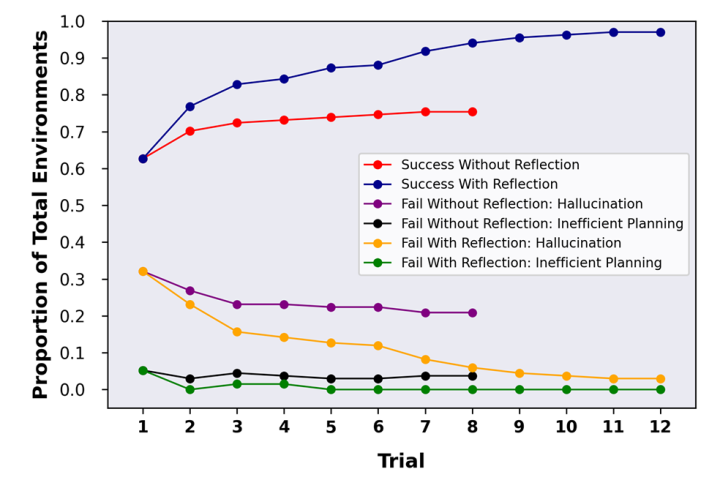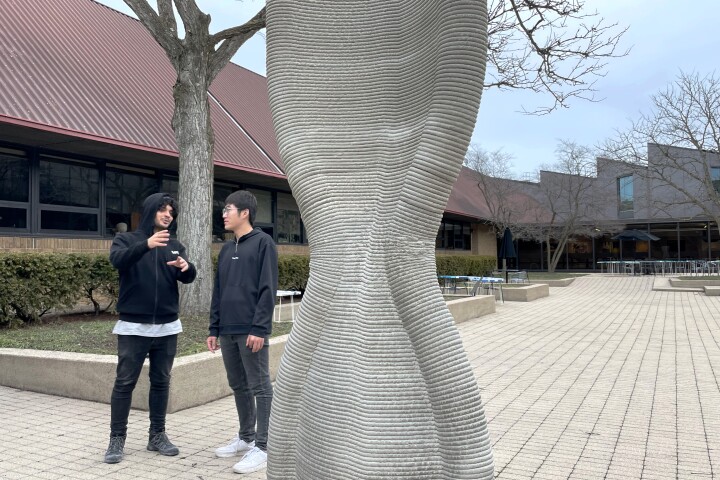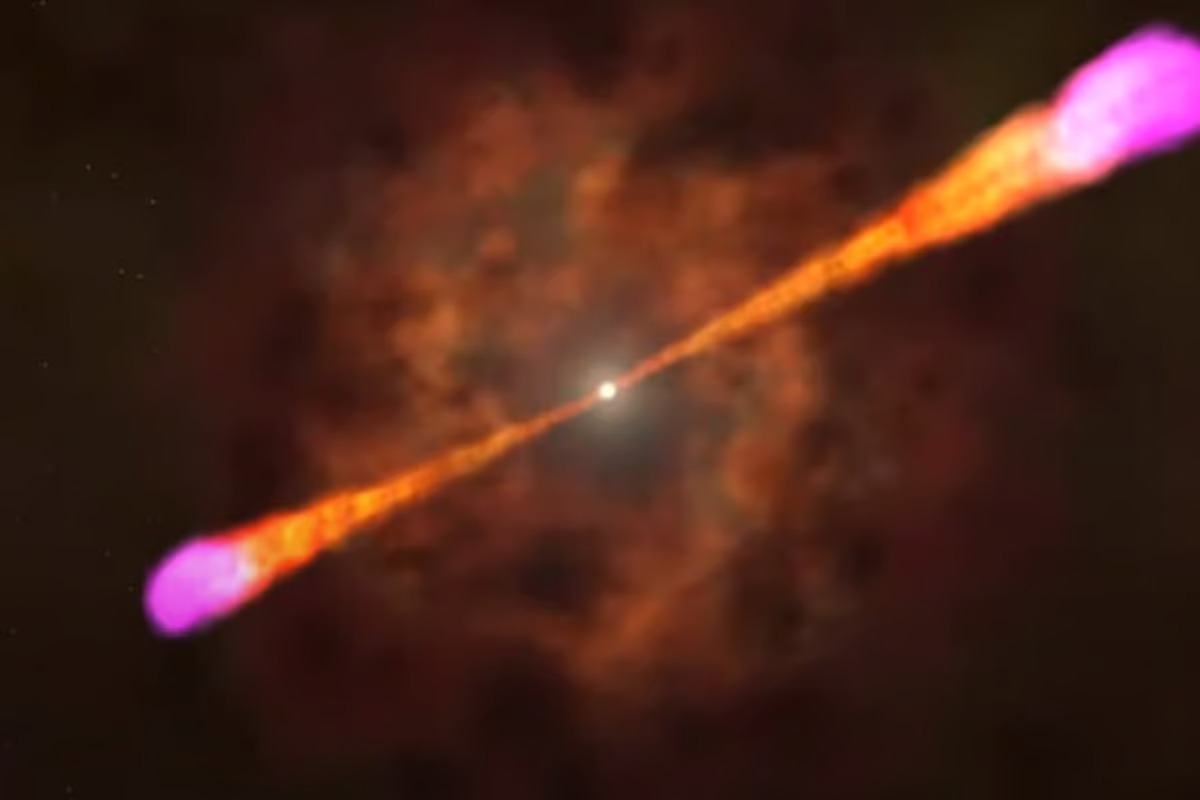 GRB 221009A may have been produced by the collpase of a black hole. NASA’s Goddard Space Flight Center. View gallery – 5 images
GRB 221009A may have been produced by the collpase of a black hole. NASA’s Goddard Space Flight Center. View gallery – 5 images
–
Since then, gamma ray bursts have garnered a great deal of scientific attention because of the high-energy events that produce them that provide clues to the nature of the universe.
According to NASA, on 2022 Oct 08, the first sign that a 1-in-10,000-year event was approaching our solar system occurred 20 billion miles away when the deep-space probe Voyager 1’s instruments detected a sudden jump in high-energy particles as the brightest gamma-ray burst ever flew past it to sweep through the inner system 30 hours later, blinding many space-based sensors as their operational limits were overwhelmed for 10 hours.
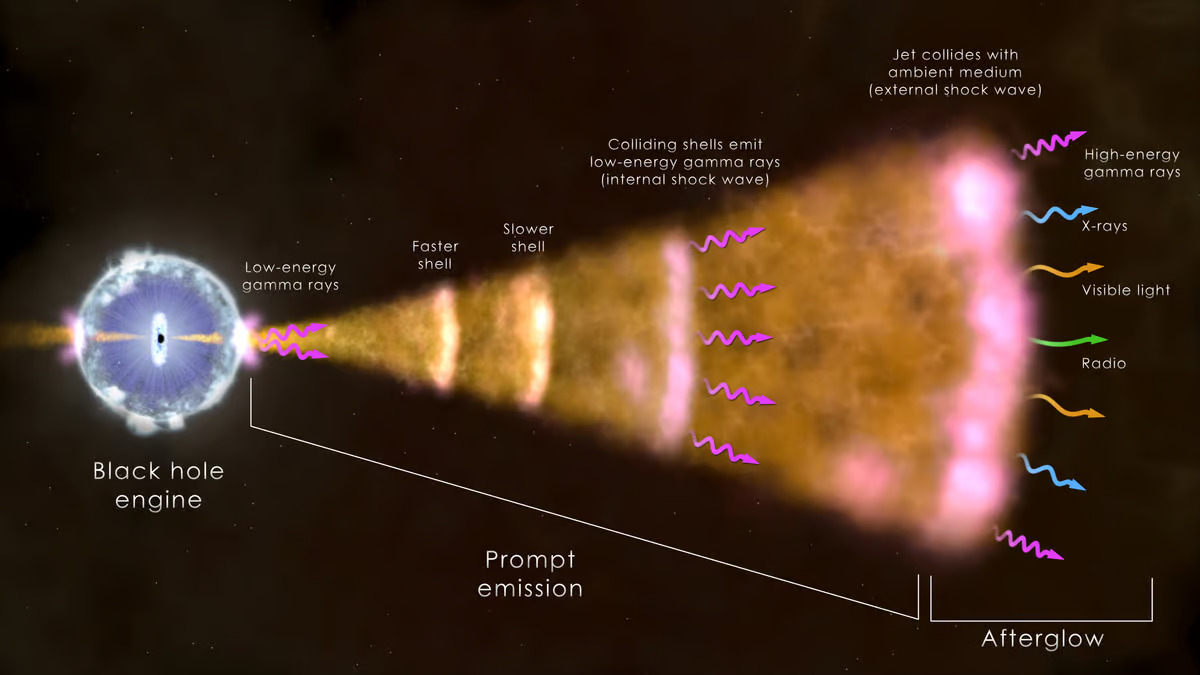
Findings from NASA’s Fermi Gamma-ray Space Telescope, the Neil Gehrels Swift Observatory, and others identified the source of the burst designated GRB 221009A as coming from a spot in the constellation of Sagitta 1.9 billion years ago at a distance of 2.5 billion light years away. Not only was the burst 70 times brighter than anything before, it also spanned 15 magnitudes of the electromagnetic spectrum from radio to gamma rays.
Unfortunately, though the source of GRB 221009A has been pinpointed, it turns out to be on a line that goes straight through the centerline of our galaxy, meaning that it is shielded by tens of thousands of light years of gas and dust. This has prevented directly observing the source, but radio waves associated with the burst have penetrated and could remain visible as an afterglow for decades to come.
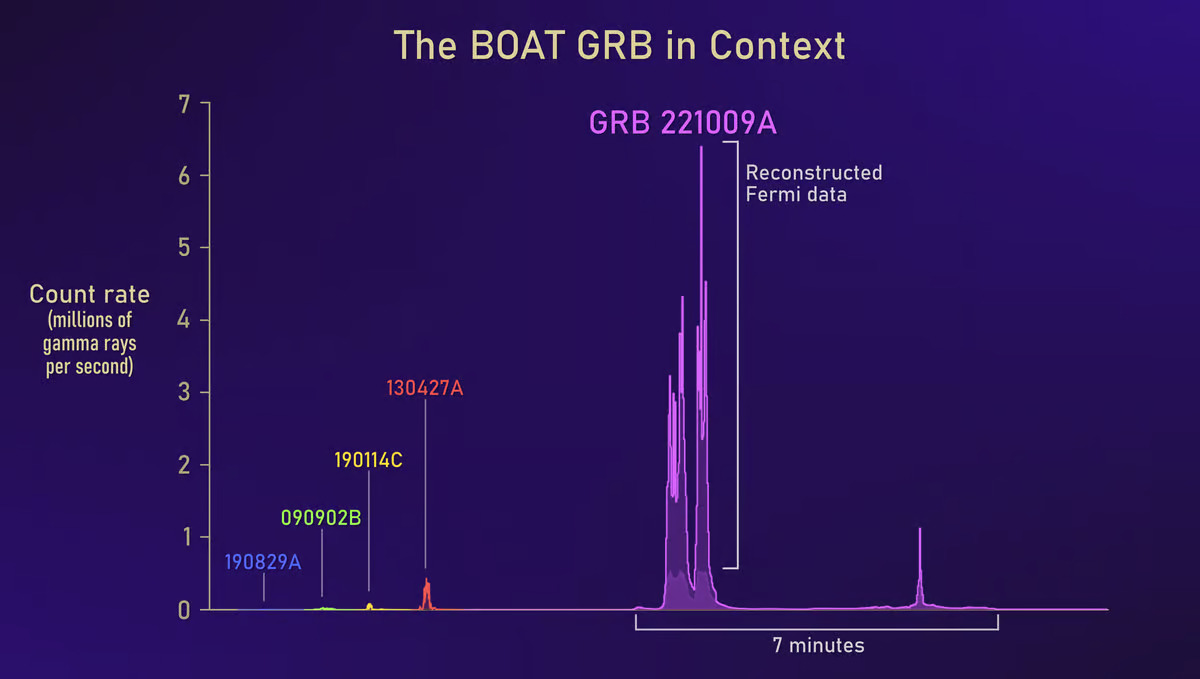
The most likely mechanism that produced the burst would be the birth of a black hole as the core of a supermassive star at the end of its life collapsed in on itself, resulting in a supernova and leaving behind a singularity that generates a pair of narrow particle jets in opposite directions at near the speed of light as it absorbs the matter in its vicinity. The shock waves from these jets, in turn, generate gamma rays.
Because the burst came from so close in cosmic terms, it provides a unique opportunity to learn more about the afterglow of such events; the dust clouds that the burst passed through, causing them to deflect detectable X-rays; and the mechanisms of black holes.
The findings were published in The Astrophysical Journal Letters.
The video below shows how a gamma-ray burst develops.
–
Source: NASA View gallery – 5 images
–












